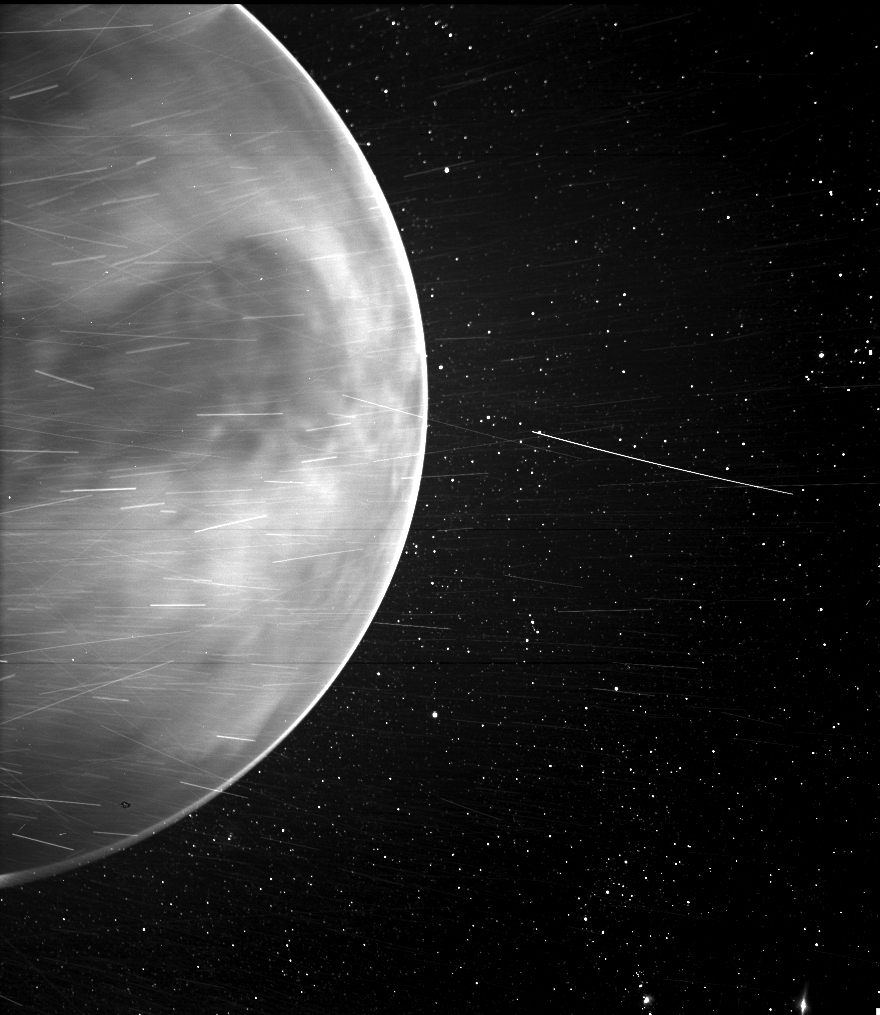2021年02月25日
A Venus Flyby
Image Credit: NASA, JHUAPL, Naval Research Lab, Guillermo Stenborg and Brendan Gallagher
Explanation: On a mission to explore the inner heliosphere and solar corona, on July 11, 2020 the Wide-field Imager on board NASA’s Parker Solar Probe captured this stunning view of the nightside of Venus at distance of about 12,400 kilometers (7,693 miles). The spacecraft was making the third of seven gravity-assist flybys of the inner planet. The gravity-asssist flybys are designed to use the approach to Venus to help the probe alter its orbit to ultimately come within 6 million kilometers (4 million miles) of the solar surface in late 2025. A surprising image, the side-looking camera seems to peer through the clouds to show a dark feature near the center known as Aphrodite Terra, the largest highland region on the Venusian surface. The bright rim at the edge of the planet is nightglow likely emitted by excited oxygen atoms recombining into molecules in the upper reaches of the atmosphere. Bright streaks and blemishes throughout the image are likely due to energetic charged particles, and dust near the camera reflecting sunlight. Skygazers from planet Earth probably recognize the familiar stars of Orion’s belt and sword at lower right.
Tomorrow’s picture: fly over
飞越金星
影像提供: NASA, JHUAPL, Naval Research Lab, Guillermo Stenborg and Brendan Gallagher
说明: 肩负探索内日球层和日冕层任务的美国航太总署帕克太阳探测器,2020年7月11日在距离金星夜面约12,400公里时,用大视野相机拍下这幅令人屏息的景观。在该时,这艘太空船正进行7次重力协航中的第3次飞越金星。这些飞越金星的重力协航操控,是要协助这艘探测器调整轨道,希望在2025年底时,能让探测器与太阳表面的距离降到6百万公里以内。在这幅出乎意表的影像里,侧视的相机看似穿过云层,见到位在影像中心附近,金星表面上最大的高原区、名为阿佛洛狄忒台地的黝黑地貌。镶在金星边缘的亮沿,可能是高层大气中,激发态氧原子复合成分子时,发光所形成的气辉。散布在影像各处的亮线和污斑,可能源自高能带电粒子轰击和相机附近不断反射阳光的尘埃。地球上的观星者,不难在影像的右下角,认出熟悉的猎户座腰带三星及猎人配剑。
明日的图片: fly over



